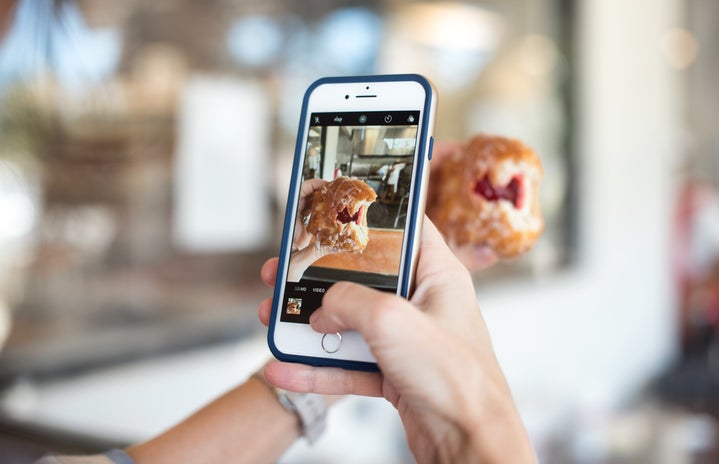Midway through this summer, after wanting to splash out on a film camera for months, I finally caved and ordered one off Amazon before I could change my mind. It cost £89 and was shipped from Japan, and when it arrived days before its due date I couldn’t wait to get started. I had already purchased film in anticipation so, after reading an online manual for guidance, I loaded it up and took a whole roll of 36 photos in one evening. I sent it off for developing the next day and miraculously it had worked, resulting in some really good photos for my first attempt. Months later, I am still as in love with my film camera as I was at the start. Here are just a few reasons why, if you’re already into photography, I’d recommend taking it one step further and getting into film…
(‘Fallen Apple’, one of the first photos I took with my film camera)
You take better photos
As a result of film being rather expensive (the 36 exposure rolls I buy cost almost £6 each, plus another £6 or more for developing), you can only afford to take good photos. There’s no more trawling through tens of the same shot to find the one slightly better than its almost identical counterparts like there is with digital cameras, and you don’t end up with a lot of irrelevant and unimportant shots, because you don’t want to waste money. Instead, you find yourself only taking carefully planned photos which are generally well framed and always deemed worth taking at the time, and so the proportion of good photos produced is usually much higher than with a digital.
You keep your photos
Although it can sometimes feel extravagant paying £6+ to develop one film (it is usually more in the region of £10 if you want a digital copy of your photos too), you do end up with prints that you’re far more likely to keep and look at than if you just copy your photos across to a computer and save them in a file somewhere. As a result, you’re more likely to use the printed photos to decorate your room and show to others, and they become more worthy of taking in the first place.
Film photos have a unique quality
Film cameras are particularly good at producing photos with an old-fashioned vintage quality, often mimicked by modern day filters that seek a similar effect. Depending upon the chosen film, photos can be slightly grainy and regularly contain slight imperfections that add character and style. Colour film is extremely effective at bringing out different colours, whereas black and white film encourages the photographer to take photos with interesting tones and patterns which are more easily neglected when using a digital device.
(‘The Pink House’, taken in a village near to where I live)
It’s a whole new experience
Taking photos with a film camera is completely different to using a digital camera. Each time you want to take a new photo you have to wind the film on and then focus on the scene, as well as making sure that you’ve set the right ISO number and chosen your desired shutter speed and aperture (although a lot of film cameras have automatic modes if you don’t fancy worrying about so many settings). Furthermore, you need to ensure you load and unload the film correctly, and remember to take the lens cap off before pressing the shutter which has to be done whilst avoiding camera shake. It’s a whole different ballgame. However, using a film camera really teaches you how photos are produced as it takes you back to the basics, and the process is far more fulfilling than just relying on technology to do everything for you.
(‘Gloomy Durham’, taken during the summer when I moved into my new student house)
Waiting for your photos is so exciting
When you have to wait until you’ve shot a whole roll (usually of 24 or 36 exposures) before you can unload your film, and then you have to wait to send it off, and then wait for your photos to be developed, the excitement can become pretty intense. I nearly always forget which photos I’ve taken throughout the long process so receiving them back is always a pleasantly surprising experience. However, if you don’t fancy waiting so long, shops such as Max Spielmann and Boots usually offer a one-hour developing service which is only about one pound more expensive than waiting for a day or more, and so you can get your photos back quickly if you just pay a bit more.
Film cameras look amazing
On top of owning great-looking photos, you also own a great-looking camera. You’ll find people giving your camera envious glances and often sharing compliments, and you can add to its vintage appearance with an authentic leather strap to carry it around with.
(My choice of camera: the Minolta Hi-Matic E)
Therefore, although film photography undeniably requires a bit more time and effort than its digital counterpart, I would still recommend it to everyone. It’s a great way of learning more about the process of taking and developing photos and, above all, it’s huge fun!

